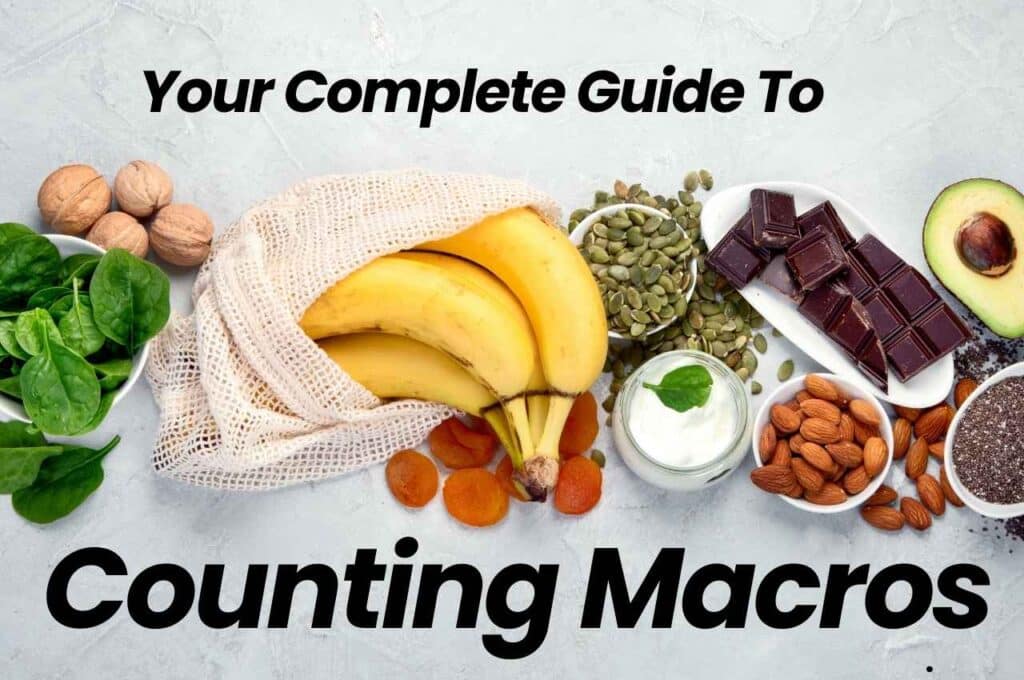Your Complete Guide To Counting Macros- The macros are the macronutrients found in food such as proteins in eggs, fat in the avocado, and carbs in cauliflower, etc. These are the essential resources of energy that keep a person fit. To stay fit you might have noticed that people count on their macros. Some diets such as ketogenic need a look after over macros.
“Counting Macros” is a very common term but in case you are unaware of it, Dietitian Gagan Anand presents “Your Complete Guide To Counting Macros” in this blog.
Unlike calorie counting, Macro counting requires mind. It is somewhat more complex than counting the calories. However, a clear-cut explanation of Macros is presented in “Your Complete Guide To Counting Macros”.
Table of Contents
ToggleYour Complete Guide To Counting Macros: Understanding Macros
Indian diet meals are heavy. We consume food that contains many nutrients and the macros are the bigger ones. Carbohydrates, Protein, and fat come under macronutrients.
One can see the macros on the plate.
The three main macros carbs are the source of energy. Levinson, a top graduate expert in nutrition and science states that “Carbohydrates are the preferred source of energy for the body, especially the brain,” she further adds “Carbohydrates break down into glucose in the body, and glucose goes from the bloodstream to the body’s cells to help them function”.
Carbohydrates are the natural resources of energy that help increase physical activity.
Proteins on the other hand are the building blocks that indicate growth, development, and repair of the tissues. The third macronutrient, fat is necessary for the increase of cell growth and production in the body. Levinson adds “ Fats also play a role in hormone production, cell growth, energy storage, and the absorption of many vitamins — aka micronutrients”
Let’s dive into the process of macronutrients and understand more about these in detail.
What are Fat/ Carbohydrates / Proteins
Fats are important to increase cell growth and enhance the activity of the body. Certainly, some fats keep our body warm and are therefore essential. Furthermore, fats increase the activity of hormonal growth.
Fats are categorized into four various types such as:
- Monounsaturated fats
- Polyunsaturated fats
- Saturated fats
- Trans fats
Healthy fats are considered unsaturated fats, monounsaturated and polyunsaturated fats whereas desaturates and trans fat can lead to heart problems.
Healthy fat option:
- Peanut butter, flaxseed, avocados, sunflower oil, corn oil, nuts, fatty fish, soybean oil, and olive oil.
What Are Carbohydrates?
Carbohydrates are considered as the fuel which helps the body work efficiently. A healthy diet must include a good source of carbohydrates as it provides us with glucose that further converts into energy helping in physical activity.
Type of Carbohydrates:
- starches, sugars, and dietary fiber.
Dietary Guidelines of America suggest that a person regularly needs to have at least 45% to 65% of carbohydrates. This definitely should not include sugar for better health and digestion.
What are Proteins?
Proteins are needed to help support the growth and function of the body. At every stage of life, the body needs protein to enhance the cell growth. The amount of protein you need in daily life depends on your age height and weight.
Good sources of protein are:
Chicken, fish, Legumes, nuts, and the seeds
Selecting on healthy protein choice can make your body fit and will increase the metabolism.
How to Count Macros?
Now that Dietitian Gagan Anand has presented details about the types of macronutrients, let now commence counting the macros in “Your Complete Guide To Counting Macros”
You need to start with the Resting Energy Expenditure (REE) which means the energy your body consumes when you are not in motion. Many other factors depend such as your height, weight, and gender.
- Male: (10 x weight in kg) + (6.25 x height in cm) – (5 x age in years) + 5
or - Female: (10 x weight in kg) + (6.25 x height in cm) – (5 x age in years) – 161
Example for a Female: (10 x 68 kg) + (6.25 x 160 cm) – (5 x 30 years) – 161 = 1,369 REE
Now you are required to multiply your REE with NREE which is the Non-Resting Energy Expenditure.
- Sedentary people ( one with less or no workout) should multiply the REE by 1.2.
- If you are engaged in 1-3 days of workout or sports, RSS x 1.375
- One with modern physical actively should multiply the REE with 1.55
- If you are very much physically active then multiply REE by 1.725
Example: 1,369 (REE) x 1.55 (Moderate Activity, 3-5 days a week) = 2,122 TDEE
A person with a strict diet schedule who follows a standard ketogenic diet (SKD) consumes the protein, fats, and carbohydrates in the following standards.
- 70% of Calories from Fat
- 20% of Calories from Protein
- 10% of Calories from Carbs
Tips to Count Macros by Dietitian Gagan Anand
Here are some essential tips you can follow regularly while counting the macros.
- Read the labels of all the packed foods you buy.
- For a strict diet and balance physics, measure your food by the food weighing scale.
- Exercise a lot or at least moderately to increase the metabolism and maintain the pratiques.
- Plan your meals for the day. This will not let you eat unhealthy food.
If you are facing trouble in weight loss, consult India’s Top Dietitian Gagan Anand, and move a step further towards a healthy body.

